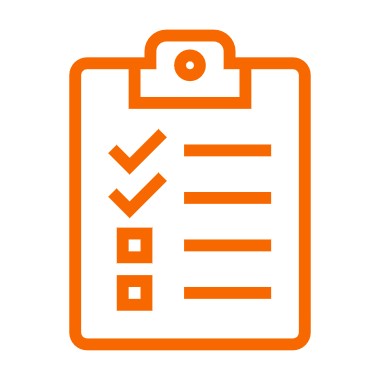Important Reminders and Best Practices
Academic Programs
- Assessment Period: An assessment period covers activities occurring between July 1 and June 30 of a given year. The annual assessment and action plan update is due November 1.
- Four-Year Cycle: The University’s current four-year assessment cycle runs through June 30, 2025, with the next one beginning July 1, 2025. During the four-year cycle, each student learning outcome is examined at least once, and an up-to-date academic program curriculum map is maintained.
- Assessment and Action Plan Update: The annual update involves documenting faculty’s examination of one or more student learning outcomes during the academic year. Faculty summarize evidence collection, criteria for success, results, analyses, and any actions that will be taken to enhance student learning.
- Reporting: Academic programs complete the annual update using a learning outcome worksheet for each assessed outcome. Completed worksheets can be sent to assessment@syr.edu.
- Measures: Faculty use at least two measures for each learning outcome, at least one of which is student work (e.g., exam questions, papers, projects, presentations, capstones, theses). Other measures could include course grades and grade distributions, course feedback, placement, student surveys, etc.
- Analysis: Faculty determine how results can be broken out by student subgroups where possible and what can be learned from that. Questions for faculty to consider include:
-
- What are the strengths seen in the student work and other evidence relative to the outcome(s) being assessed?
- What are the weaknesses or areas of underperformance?
- If the program did not meet the criteria for success that faculty set, what were the differences between what was expected and what was found?
- What actions can be taken to enhance or improve student learning in the program?
-
- Meetings: Build time into faculty meetings for program-level student learning outcomes conversations. Maintain meeting minutes of each discussion.
- Evidence Retention: Student work should be retained within the program for one year after the close of the academic year.
- Contact: If you have any questions about implementing an assessment and action plan and/or the annual update, please contact the Assessment Working Team.
Co-Curricular Programs/Units
- Assessment Period: An assessment period covers activities occurring between July 1 and June 30 of a given year. The annual assessment and action plan update is due November 1. For programs/units within the Division of the Student Experience the deadline is August 1.
- Four-Year Cycle: The University’s current four-year assessment cycle runs through June 30, 2025, with the next one beginning July 1, 2025. During the four-year cycle, each learning and success outcome is examined at least once.
- Assessment and Action Plan: The annual update involves documenting a co-curricular program or unit’s examination of one or more learning and success (e.g., operational) outcomes. Staff summarize evidence collection, criteria for success, results, analyses, and any actions that will be taken to enhance student learning and/or experience.
- Reporting: Co-curricular programs and units are expected to document learning and/or success outcomes as part of the annual update process. This is done by completing a learning outcome worksheet and/or a success outcome worksheet for each outcome assessed and sending the completed worksheets to assessment@syr.edu.
- Analysis: When possible, engage students in assessment conversations. A resource on how to engage students in assessment can be found here. Consider how results can be broken out by subgroups, if applicable, and what can be learned from that. Questions to consider when looking at results:
-
- What are the strengths seen in student work, student development, and/or operations?
- What are the weaknesses or areas of underperformance?
- If a measure or outcome is not met, what actions can be taken to enhance or improve student learning and/or operations? Centering equity in each phase of the assessment cycle supports all students. Learn more about centering equity in the assessment here.
-
- Meetings: Build time into staff meetings to discuss the assessment and action plan. Maintain meeting minutes of each discussion.
- Evidence Retention: Co-curricular programs/units should maintain any evidence they have collected and meeting minutes within their programs/units for at least one year.
- Contact: If you have any questions about implementing an assessment and action plan, the annual update, or how to navigate P&SS, please contact the Assessment Working Team.
Functional Units
- Assessment Period: An assessment period covers activities occurring between July 1 and June 30 of a given year. The annual assessment and action plan update is due November 1. For programs/units within the Division of the Student Experience the deadline is August 1, 2025.
- Four-Year Cycle: The University’s current four-year assessment cycle runs through June 30, 2025, with the next one beginning July 1, 2025. During the four-year cycle, each success, or operational, outcome is examined at least once.
- Assessment and Action Plan: The annual update involves documenting a unit’s examination of one or more success outcomes. Staff summarize evidence collection, targets for success, results, analyses, and any actions that will be taken to enhance student learning and/or operations.
- Reporting: Functional units are expected to document success outcomes as part of the annual update process. This is done by completing a success outcome worksheet for each outcome being assessed and sending the completed worksheets to assessment@syr.edu.
- Evidence: Use at least one primary evidence for each success outcome assessed. Examples include average time, counts, money raised, number of applications, project metrics, and total time. Secondary evidence supports the information gathered through primary evidence. Examples include stakeholder perceptions gathered through focus groups, interviews, and surveys.
- Analysis: Consider how results can be broken out by subgroups, if applicable, and what can be learned from that. Questions to consider include:
-
- What are the strengths and weaknesses observed in results?
- If the target for success was not met, what were the differences between what was expected and what was found?
- What actions can be taken to enhance or improve operational success in the unit?
-
- Meetings: Build time into staff meetings to discuss the assessment and action plan. Maintain meeting minutes of each discussion.
- Evidence Retention: Functional units should maintain any evidence they have collected and meeting minutes within their units for at least one year.
- Contact: If you have any questions about implementing an assessment and action plan, the annual update, or how to navigate P&SS, please contact the Assessment Working Team.
Dean’s Offices
- Assessment Period: An assessment period covers activities occurring between July 1 and June 30 of a given year. The annual assessment and action plan update is due August 1.
- Four-Year Cycle: The University’s current four-year assessment cycle runs through June 30, 2025, with the next one beginning July 1, 2025. During the four-year cycle, each success, or operational, outcome is examined at least once.
- Assessment and Action Plan: The annual update involves documenting Dean’s Office success outcomes. For their area of responsibility, Dean’s Office team members summarize evidence collection, criteria for success, results, analyses, and any actions that will be taken to enhance student learning and/or operations in the school/college.
- Reporting: Dean’s Offices are expected to document success outcomes as part of the annual update process. This is done by completing a success outcome worksheet for each success outcome being assessed and sending the completed worksheets to assessment@syr.edu.
- Evidence: Use at least one primary evidence for each success outcome assessed. Examples include average time, counts, money raised, number of applications, project metrics, and total time. Secondary evidence supports the information gathered through primary evidence. Examples include stakeholder perceptions gathered through focus groups, interviews, and surveys.
- Analysis: Consider how results can be broken out by subgroups, if applicable, and what can be learned from that. Questions to consider when looking at results include:
-
- What are the strengths and weaknesses observed in results?
- If the target for success was not met, what were the differences between what was expected and what was found?
- What actions can be taken to enhance or improve student learning and operational success in the school/college?
-
- Meetings: Build time into regular meetings to discuss the assessment and action plan. Maintain meeting minutes of each discussion.
- Evidence Retention: Dean’s Office should maintain any evidence they have collected within the office for at least one year.
- Contact: If you have any questions about implementing an assessment and action plan, the annual update, or how to navigate P&SS, please contact the Assessment Working Team.
Join a ‘Get it Done’ Session
The Assessment Working Team invites you to join a working session to complete the 2024-25 assessment and action plan update for your program/unit.



